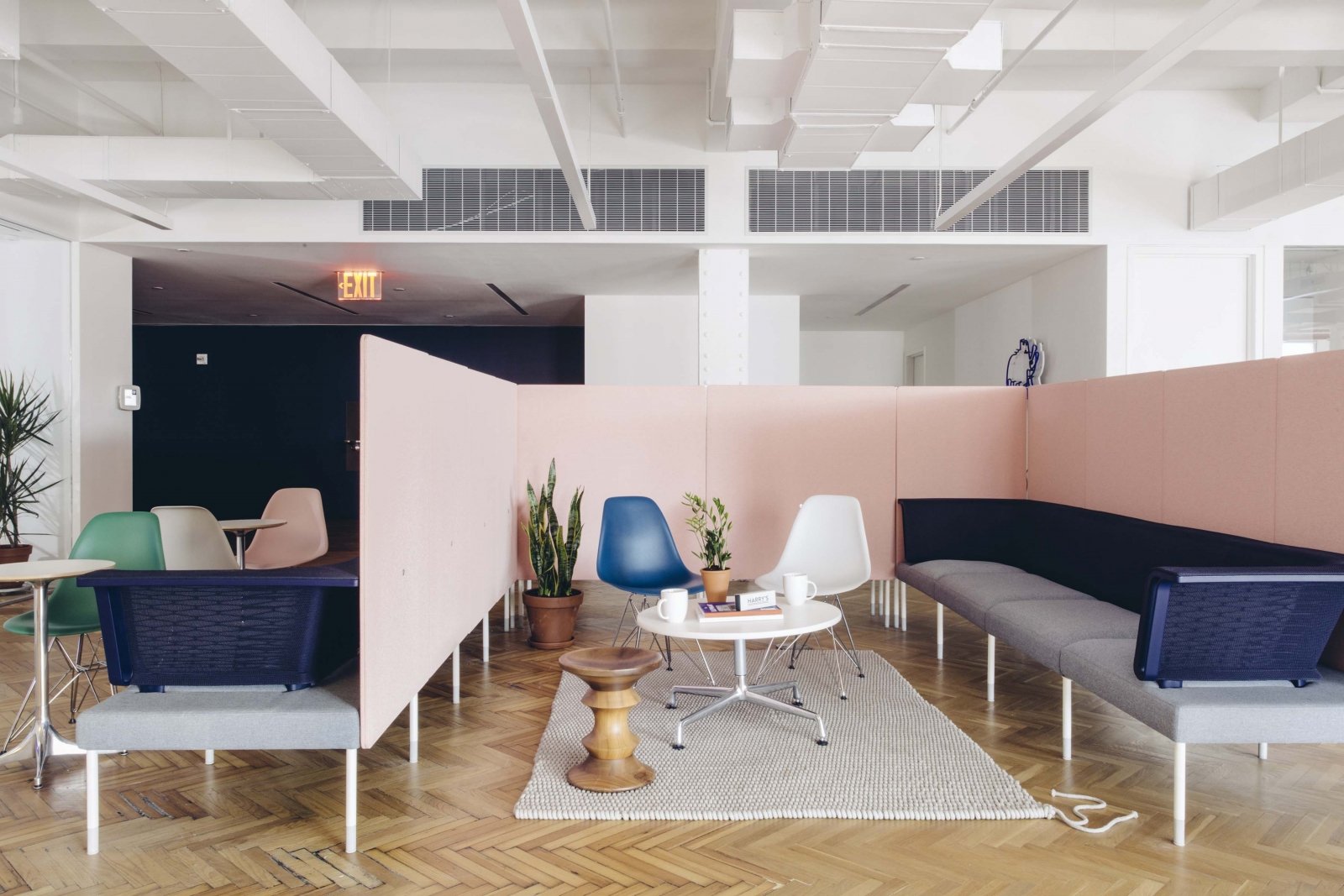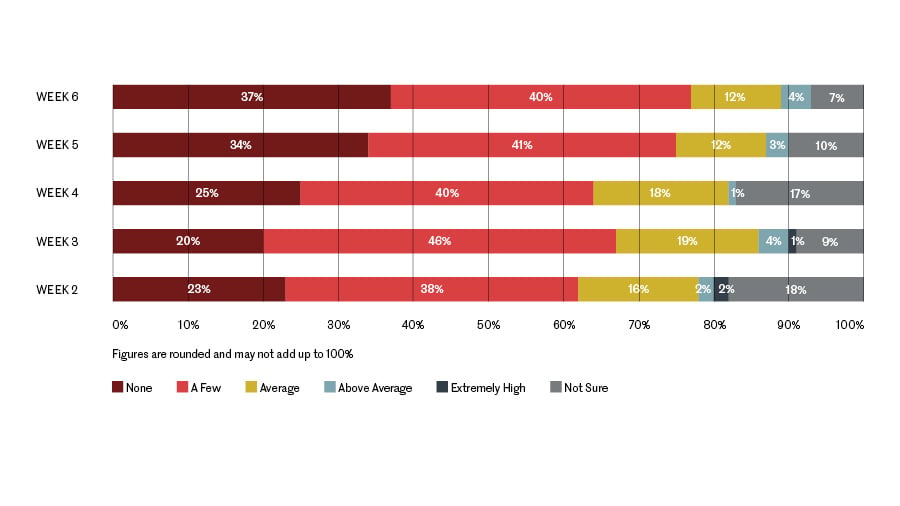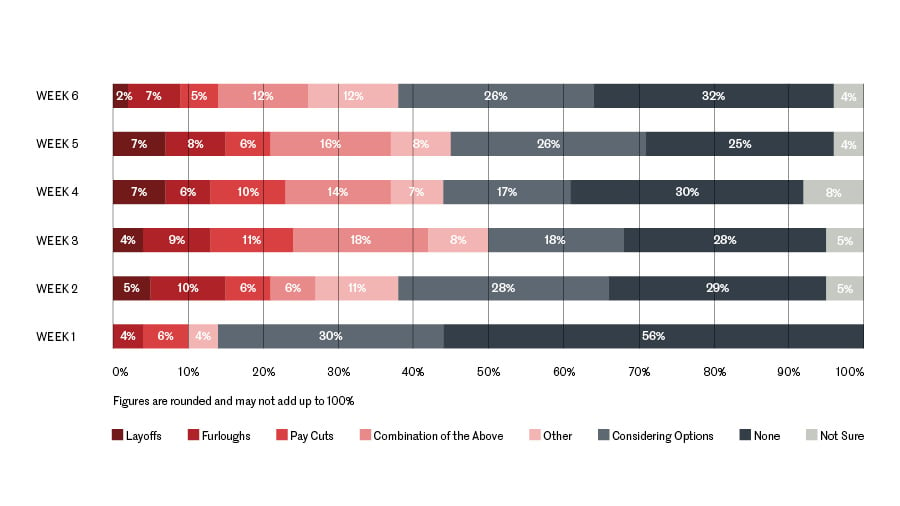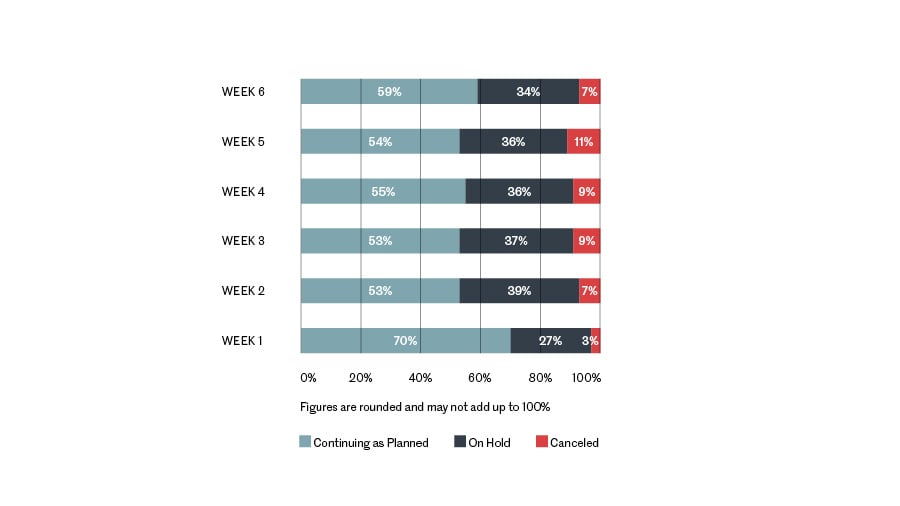
June 3, 2020
Measuring the Fallout of COVID-19 for the Design Industry
Take a look at the first results of ThinkLab’s Industry Impact Survey, which is generating data to help designers and design manufacturers move forward during these challenging times.

At ThinkLab, our passion lies at the intersection of specification and design, where we use research to improve communications between designers and manufacturers. Today, that research is helping companies within the interiors industry make critical business decisions as we face economic uncertainty. Here, we share some recent data and insights from our Industry Impact Survey—an ongoing research initiative that we invite you to participate in.
The major impacts on the U.S. economy as a result of COVID-19 began in March 2020. Over six weeks of research between March and May, with 1,392 data points, here’s what we found:
From a vertical market perspective, workplace projects are on hold, with lots of discussions about rightsizing i n the wake of COVID-19 (especially in the tech sector). Yet across other verticals, we see a mixed bag of growth and pause, with a continuation of undertakings already in progress and a stoppage of ones in the planning phase. Many initiatives in the retail, oil, airline, consulting, hospitality (restaurants), creative, nonurgent health care, multi-family, and financial sectors are on hold, while residential, civil, government, and education projects are generally moving forward. Emergency health-care projects are ramping up at this time.
We’ve been sharing insights on a regular basis with the participants in our surveys, and the feedback on this type of data was tremendous. However, our respondents asked for more detail, so we segmented the research by audience, geography, and company and market size.
We’ve summarized the highlights below, but for graphical representation of the data and more specific metrics you can join the impact survey and get the results delivered to you.
Audience
Overall, we know that projects at the manufacturer level typically lag behind A&D firm activity. For example, throughout this study, the proportion of manufacturers saying that bid activity has stopped completely has never exceeded 4 percent. Meanwhile, this proportion has never gone below 20 percent for A&D firms.
The first week of measurement did not show drastic cancellation of projects, but the percentage of projects canceled gradually crept up until week 5 in the study and reflected some optimism in week 6. However, the amount of bid activity that was stopped or nearly stopped increased week by week, as did the measure of bids “continuing as usual.”

Company Size
Overall, the immediate impact has been most profound on small businesses in the design industry.
Companies with 50 or fewer employees reacted faster (or were hit harder) than large companies when it came to pay cuts and furloughs. They were also more likely to have projects put on hold in the early days of measuring and were significantly less likely to have rated bid activity as “average.” Lastly, these companies with 50 or fewer employees were also significantly more likely to say that bid activity had stopped entirely.

Geography and Market Size
Overall, we know that COVID-19 has affected primary markets more severely, especially major metropolitan areas like New York City. In general, companies in the eastern half of the United States have been more likely to put projects on hold or cancel them altogether.
Bid activity on the East and West Coasts has been generally more negatively affected than in the Central region, with more than 60 percent of respondents suggesting bid activity has been “slow or stopped” over multiple weeks.
When looking at market size, unsurprisingly, companies in primary markets have been more likely to cancel projects than those in secondary or tertiary markets.

If this research has shown us anything, it’s the power of data. The intent is to use this research to help build future business strategies after the un-pause. We’ve even created a subsequent series of Moving Forward Workshops to help manufacturers in the industry do just that. We invite you to visit our website to learn more about this data-driven way of thinking. And don’t forget to take the impact survey every week, so you can get results like these delivered straight to your inbox.
Amanda Schneider is president of ThinkLab, the research division of SANDOW. ThinkLab combines SANDOW’s reach within the architecture and design community with proven market research techniques. It uncovers relevant trends and opportunities that connect back to brand and business goals in a thought-provoking, creative, and actionable way. Join in to know what’s next at thinklab.design/join-in.
You may also enjoy “How Can Designers Specify for the Environment in a Disposable Era?”
Would you like to comment on this article? Send your thoughts to: [email protected]
Register here for Metropolis Webinars
Connect with experts and design leaders on the most important conversations of the day.
Recent Viewpoints
Viewpoints
Sustainability News Updates for Q2 2025





